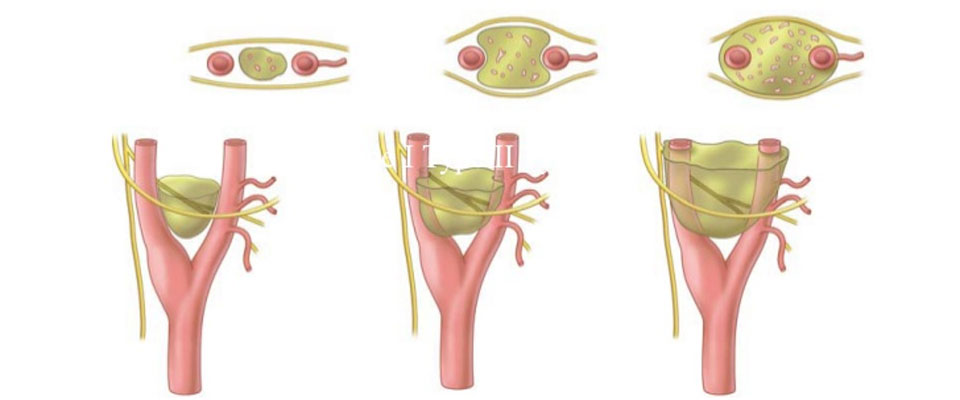
What Is A Tumor Of The Carotid Body?
Tumors of the carotid body are growths in the neck alongside the carotid artery and the jugular vein. Also known as chemodectomas, they are rare but well-recognized. The normal carotid body is a small structure consisting of a bundle of cells that monitor the concentration of oxygen, the content of carbon dioxide and the acidity of the blood in the brain. It is located on the main carotid artery wall as it is divided into two smaller arteries that carry blood to the brain, skull, and face. The carotid body has a rich supply of blood. Tumors of the carotid body develop from these cells. The tumor gradually expands and tends to spread across the carotid arteries two main branches. The patient becomes aware of a lump in the neck as it grows bigger. This is usually painless but can cause discomfort, the heaviness of the voice and damage to the nerves around it. Approximately 5 to 10 percent of the tumors affect both sides if the affected person does not come from a family with a history of carotid body tumors, in which case the probability of both sides is up to 30 percent. About one in ten carotid body tumors contain malignant cancer cells.
How Is A Tumor Of The Carotid Body Diagnosed?
In order to diagnose a carotid body tumor, a combination of duplex (Doppler-ultrasound) scanning, CT scanning, and MRI scanning can be used. These tests help to distinguish a carotid body tumor from other lumps in the neck. The main condition that can mimic a carotid body tumor is a related condition called a paraganglioma, a tumor caused by one of the nerves in the neck alongside the blood vessels. These are easier to remove than carotid body tumors because they are less stuck in the carotid arteries and have a lower supply of blood. Lymph nodes, neurofibromas and bronchial cysts are other possible causes.
When Should You Remove A Carotid Body?
Tumors of the carotid body slowly but inevitably increase if left untreated and can eventually block large blood vessels in the neck. The larger they grow, the more likely they become malignant and the harder the operation becomes. For this reason, even if it is relatively small, it is advisable to remove carotid body tumors. The exception is the detection of small growths in a family with a history of the condition. These lumps can be impalpable and only detected by ultrasound and can be left safely and monitored regularly until they reach an operable size
How Is A Tumor Of The Carotid Body Removed?
Tumors of the carotid body are best treated by surgery. A general anesthetic is required. The carotid arteries are exposed until the tumor is safely removed from the surrounding structures. Carotid body tumors have a very rich blood supply and are usually stuck in the neck and nerves around the major blood vessels. If the carotid artery is invaded by the tumor, the carotid artery must be reconstructed to preserve the flow of blood to the brain.
For these reasons, an experienced carotid surgeon who knows how to operate on the carotid arteries must perform the operation.